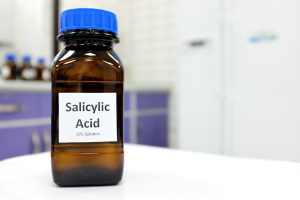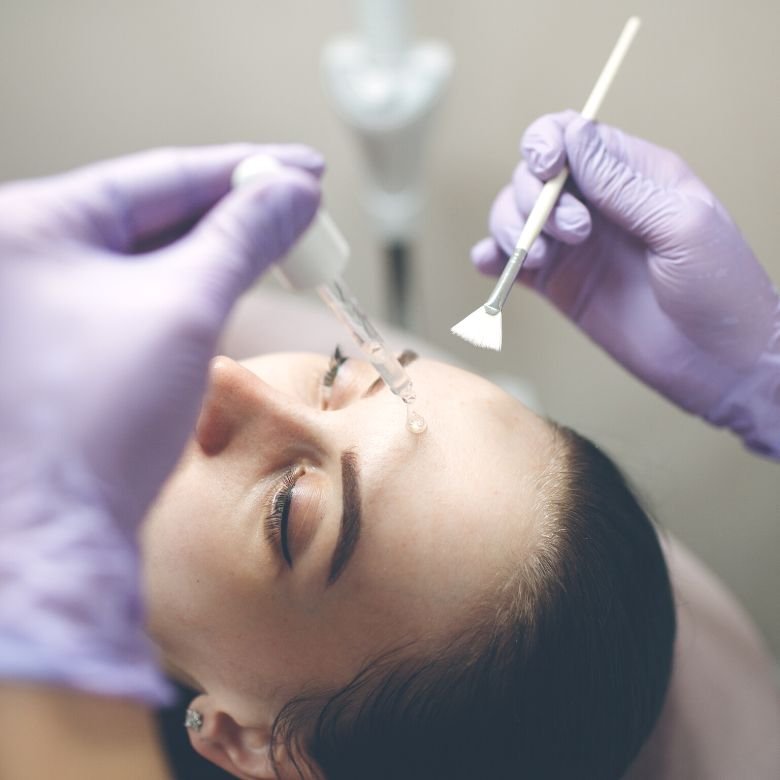Acids have many valuable properties, which is why they are widely used in cosmetics production and cosmetology. Salicylic acid is one of the most commonly used acids. Where can it be found, what are its characteristics and what is its role in cosmetics? Here are the key facts:

What is salicylic acid?
Salicylic acid is also called acidum salicylicum or o-hydroxybenzoic acid. Its name comes from the Latin word salix, meaning willow tree, from whose bark it was first extracted. This organic compound is classified as aromatic hydroxy acid, and accordingly it has a carboxyl group (COOH) and a hydroxyl group (OH). The chemical formula of salicylic acid is as follows: C7H6O3.
The discovery of salicylic acid is attributed to an Italian chemist, Raffaele Piria, who lived from 1814 to 1865. He was the first person to research the properties of salicin. In the 1850s, acidum salicylicum was isolated by a German chemist, Hermann Kolbe.
Where can salicylic acid be found?
In nature, salicylic acid is present in plants. This compound keeps them healthy and protects them from pathogens and pests. It also stimulates their growth and improves the life-giving process of photosynthesis. What things contain salicylic acid? Salicylates, i.e., the salts and esters of salicylic acid, are also found in many products that we use on a daily basis. Those include, but are not limited to:
- certain vegetables and dried fruits,
- pickled fruits and vegetables,
- mustards,
- wines and other fermented beverages,
- certain fruit juices and concentrates,
- herbs and spices.
Under laboratory conditions, salicylic acid can be obtained by the so-called Kolbe–Schmitt reaction using sodium phenoxide and carbon dioxide.
Salicylic acid — physical and chemical properties
What are salicylic acid characteristics? It is a white or transparent, crystalline and odourless powder. It dissolves easily in hot water, ethanol, chloroform and ether. On the other hand, it does not dissolve at all or dissolves very poorly in cold water. The density of salicylic acid is 1.443 g/cm³ and its melting point is 159 °C.
Salicylic acid: acceptable concentration
Strongly concentrated salicylic acid irritates mucous membranes and may even cause skin burns. In cosmetics and drugs, appropriate concentrations of it depend on its function in a given product. Detailed guidance on the maximum concentration of salicylic acid is given in the Regulation (EC) No 1223/2009 of 30 November 2009. According to this regulation, the maximum concentration of salicylic acid used as a preservative in the manufacture of cosmetics is 0.5%. Additionally, acidum salicylicum is not to be used, among others, in cosmetics for children under 3 years of age (except for shampoos). In certain rinse-off cosmetics, the concentration of salicylic acid used as a preservative should not exceed 2–3% (depending on the type of the product and its intended use).
In ready-made and compounded drugs, the concentration of salicylic acid solutions ranges from 1% to 10%.There are also very strong cosmetic preparations available on the market that contain 30–40% of salicylic acid — those are most often specialist products used in beauty salons.

How does salicylic acid work?
Why have people been using salicylic acid for more than 150 years? The reason is that this compound has a very broad range of effects — it is one of the most effective disinfectants, bactericides, fungicides and regenerating agents. Facials using salicylic acid reduce the amount of sebum and improve the overall condition of the skin. Salicylic acid thoroughly exfoliates the skin, facilitating the removal of sick or dead cells. (However, it is important to note that an excessive amount of salicylic acid may cause skin dryness.)
Salicylic acid can also be used for skin discolouration. Its solution, applied in an appropriate quantity, evens-out the skin tone and gradually removes the hyperpigmentation spots. Moreover, salicylic acid can be used on foot skin, facilitating the removal of uncomfortable corns and non-aesthetic, calloused skin.
Salicylic acid in cosmetics
Which products currently contain salicylic acid? The use of this compound in cosmetics is very common. Salicylic acid is present, among others, in:
- acne toners,
- antibacterial gels and creams,
- exfoliants,
- soaps,
- masks,
- anti-dandruff shampoos.
In cosmetic and pharmaceutical industries, the manufacturers find new applications for salicylic acid again and again. It is also used in products such as corn plasters, anti-acne zinc pastes with salicylic acid or exfoliating face serums. Advanced preparations with high concentration of salicylates are also available on the market. These products are mainly used for a professional local treatments for the face and body.
- https://pubchem.ncbi.nlm.nih.gov/compound/Salicylic-Acid
- https://go.drugbank.com/drugs/DB00936
- https://aestheticcosmetology.com/wp-content/uploads/2023/06/ACM-2023-03-v7-Wisniewska-PL.pdf
- Özokan G, Sağır T, Emekli Alturfan E. Synthesis of Natural Salicylic Acid as a Cosmetic Ingredient Using Green Chemistry Methods. Experimed. 2022;12(1):12-17. https://doi.org/10.26650/experimed.2022.1068934
- Kapuścińska A, Nowak I. Zastosowanie kwasów organicznych w terapii trądziku i przebarwień skóry. Postępy Higieny i Medycyny Doświadczalnej. 2015;69:374-383. https://doi.org/10.5604/17322693.1145825
